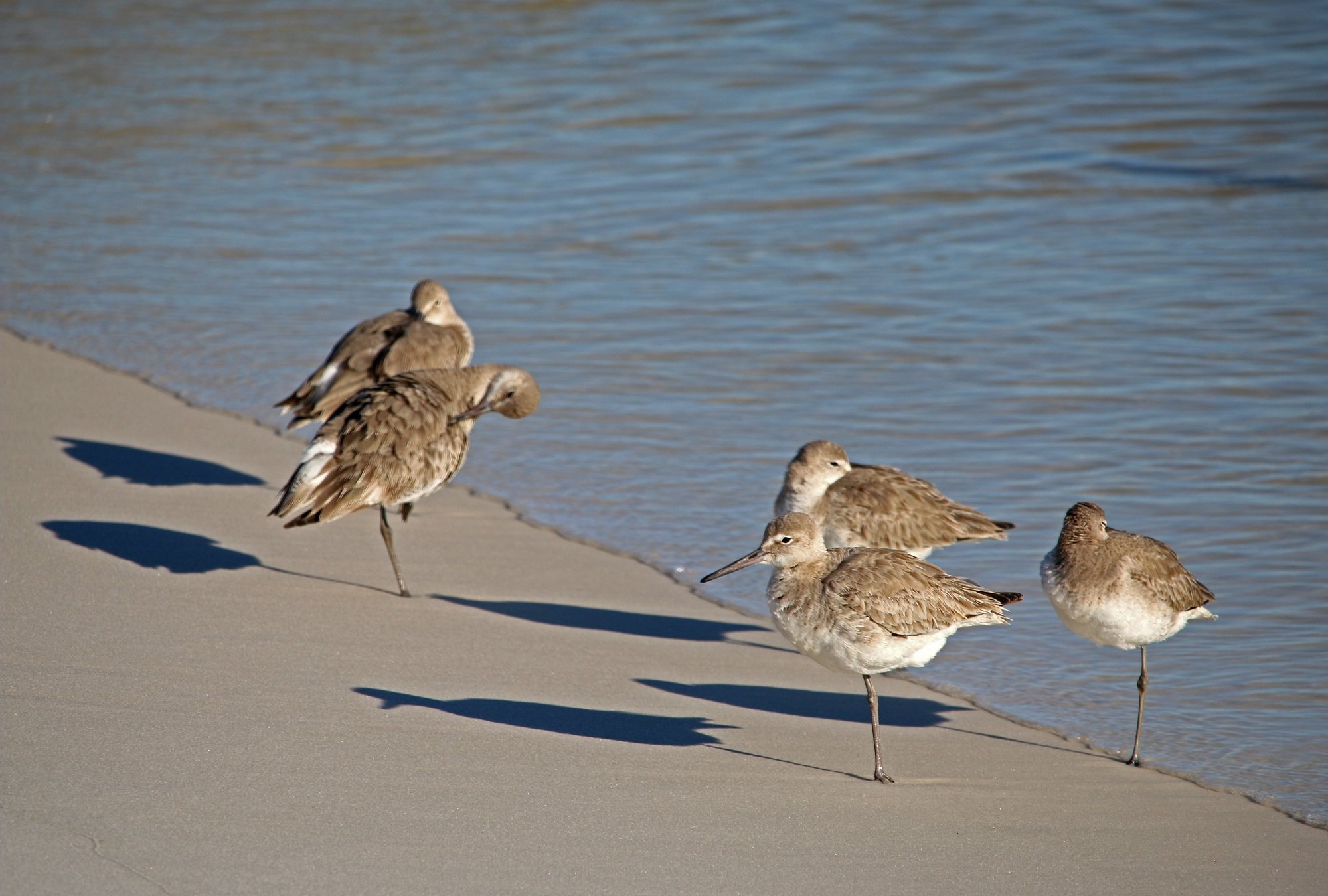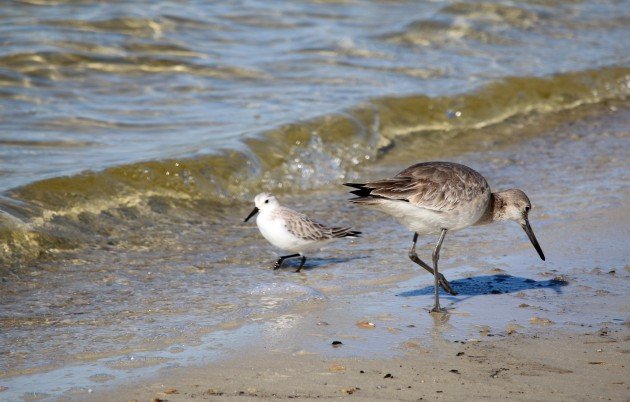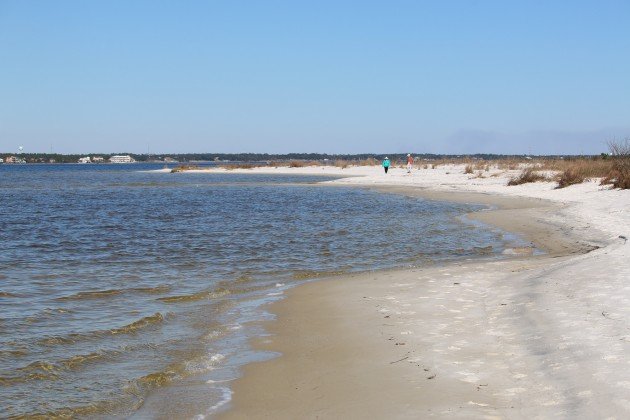
There is no doubt in my mind that the annual Great Backyard Bird Count (GBBC) is the most impressive citizen science endeavor in the world. Run by the Cornell Lab of Ornithology, Audubon, and Canada’s Bird Studies, the GBBC rallies global birders to go out and bird, submitting checklists of their sightings. This year the event was even preceded by an article in the New York Times.
The 2016, the GBBC ran from February 12th through February 15th. I didn’t have time to bird each day, but I set out in the afternoon on the 13th to count birds along the Navarre portion of Santa Rosa Sound, followed by the Gulf of Mexico.
I love birding on the sound. In all seasons birds are abundant, from the waterfowl and shorebirds in winter to the ubiquitous pelicans and Osprey that cut the sky with their long wingspans throughout the year. Halfway through February some migratory species have already begun to arrive, so I made sure to keep my peepers peeled.

Willet and Sanderling
I wasn’t disappointed. A half-dozen Greater Scaups were my first tallies, followed swiftly by Willets and Sanderlings. The sound is bordered by a narrow sand beach, and I trod along slowly, photographing as I went along. A small pond hosted both Dunlin and Black-bellied Plover, while farther out in the rolling waves floated Common Loons, Bufflehead, and Horned Grebes. My highlight of the trip was a pair of Bonaparte’s Gulls, soaring overhead before disappearing into the deep blue sky. In an hour I had recorded sixteen species.
Though I was less lucky on the Gulf side with my second checklist, I picked up Rock Pigeons (yay?) and Brown Pelicans. More Sanderlings and Willets ran along the sugar-sand, and mixed flocks of Ring-billed and Laughing Gulls chased each other and made a general racket.
At the end of the day, I submitted two checklists. Sure, it doesn’t seem like a lot of birding, but that’s the true beauty of the GBBC. Each contribution eventually adds up to a ridiculously impressive total, a scientific treasure trove of data to be mined for range patterns, rare species sightings, and estimates of birders across the countries of the world. At the time of writing, 138,953 checklists had been submitted, covering 5,128 species (more than last year), and 15,364,954 individual birds! As we all have until March 1st to post our results, these numbers will only grow.

Santa Rosa Sound
In a world where we hear of environmental disasters more than environmental success stories, I like that thousands and thousands of birders across the world came together over one weekend to see and to count for a common cause. We recorded over half of the world’s known species, sharing our photos and delighting once again in the thrills of nature. Perhaps my efforts may have been “small” on their own, but I was part of a movement!











Leave a Comment